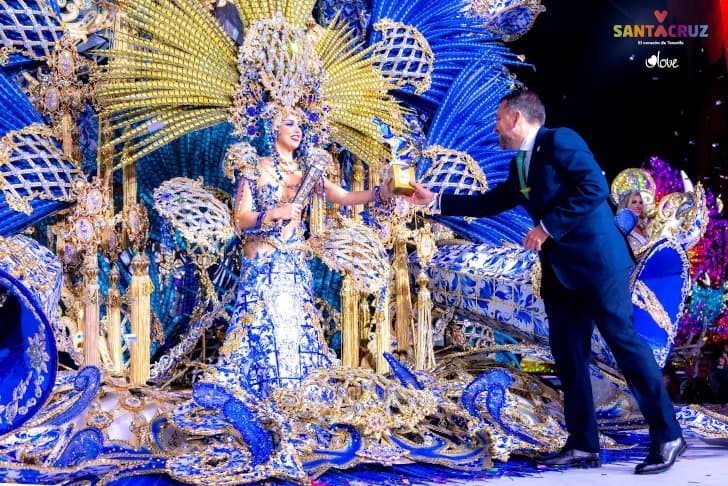The earliest written references to carnival celebrations in Santa Cruz de Tenerife are dated the late 18th century, but the Tenerife Carnival is probably older than that. It is believed that the Spanish started to celebrate carnival shortly after conquering Tenerife and establishing the first permanent settlement in the late 15th century.
The Carnival was temporarily banned during the dictatorships of Miguel Primo de Rivera and Francisco Franco, but the locals circumvented the ban by calling the celebrations “Winter holiday”. Since 1960, the annual Carnival has been the largest event of the year in the Canary Islands. The Ministry of Industry, Trade and Tourism of Spain designated is as a Fiesta of International Tourist Interest in 1980.
The Carnival of Santa Cruz de Tenerife usually kicks off two weeks before Ash Wednesday. The first week of the Carnival is filled with contests for comparsas (carnival groups of singers, musicians and dancers) and murgas (groups of musical theatre performers), parties, and other exciting events. But the real fun begins on the Wednesday before the Carnival weekend, the day when the Carnival Queen is elected.
The Queen of the Carnival of Santa Cruz de Tenerife is selected during an event called the Gala Reina, which is televised nationally and abroad. She is responsible for representing the Carnival at various tourism-related events throughout the year and acting as a sort of cultural ambassador for the Canary Islands.
The first parade of the Carnival, the Announcement Parade, is held on the Friday after the Gala Reina. During the parade, all participating comparsas march through the city to announce the beginning of the Carnival. The Queen, of course, has her own float accompanied by murgas and rondallas (string ensembles). The parade has so many participants that it takes several hours for everyone to march through the city. Once the parade is over, the Carnival officially begins.
Carnival Saturday is dedicated to dancing. Special stages are built on city squares, focusing on different types of music, from Latin to electronic. Dancing and partying continues until Carnival Tuesday, when the Grand Parade featuring comparsas, floats and the Carnival Queen once again marches through the city.
Even though the Grand Parade marks the culmination of the Carnival, it is not the final event. The parade is followed by a traditional ceremony named “the burial of the sardine” held on Ash Wednesday (the first day of Lent). A giant paper sardine is carried through the city in a mock funeral procession and then burned. The weekend after Ash Wednesday, known as the Piñata weekend, concludes the festivities. Its main events are musical performances in several venues and a fireworks display.
Each edition of the Carnival of Santa Cruz de Tenerife since 1987 has had a unique theme. Some of the past themes were Rome, Space, Cinema, Circus, The Thousand and One Nights, Pirates, The Roaring 20s, Horror Films, Caribbean, Carnivals of the World, Science Fiction, and more.

Photo: carnavaldetenerife.com




